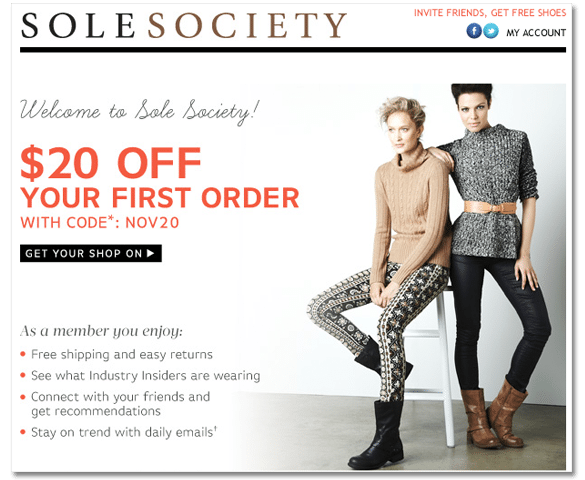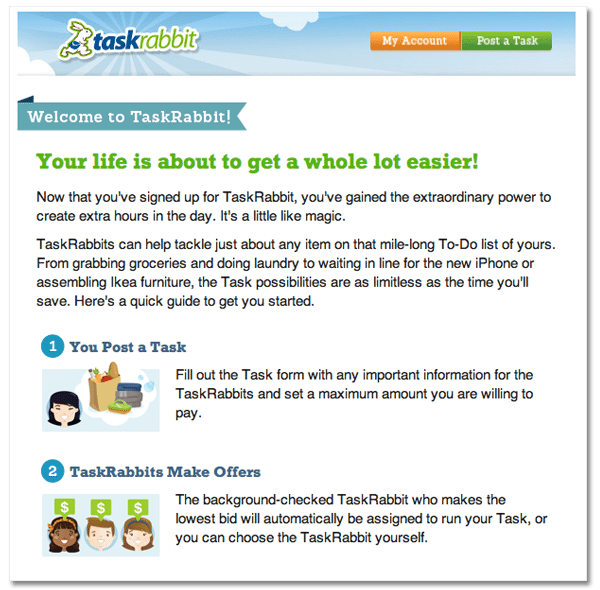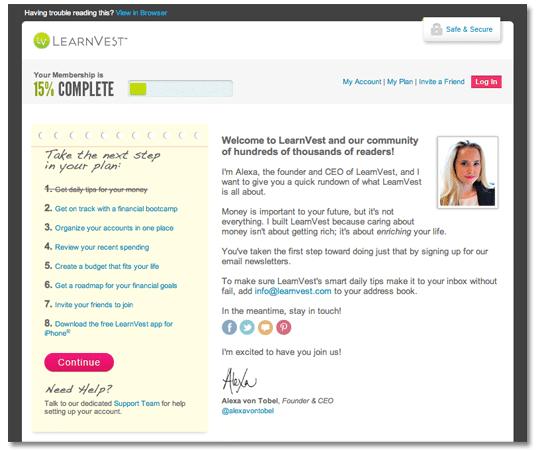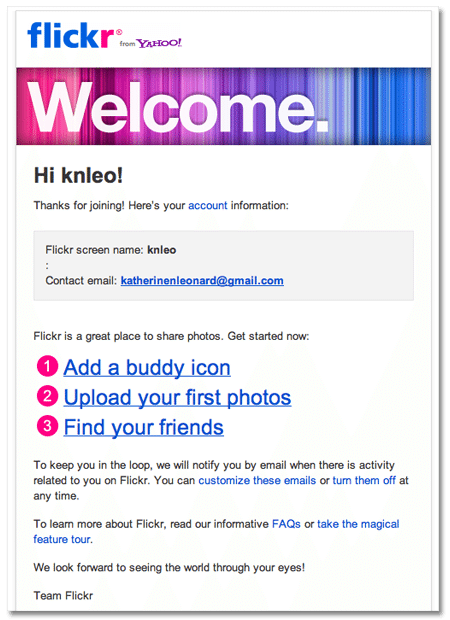Whether a nod or a warm hello, as consumers we expect of some sort of acknowledgment when we walk into a brick and mortar store. That same expectation holds true in the digital world — when we sign up for a subscription or service, we look to our inboxes for immediate and friendly recognition.
According to ConstantContact, the average open rate for a welcome email is 50-60%, which is significantly higher than the average open rate for day-to-day emails, regardless of industry. These unusually high rates make the welcome email the perfect opportunity to nourish relationships from the very beginning. But don’t let the name fool you — to foster engagement and work toward real business objectives, it’s important to say a bit more than “welcome.”
Give them a next step
So your subscriber signed up. That’s great news, but if you want them to take that next step in the sales funnel, this is the best time to tell them. In the example below, LearnVest provides a list of eight steps toward completing their proprietary financial plan. Given the nature of LearnVest’s product (education-based, heavy involvement from the user), the longer list makes sense — but depending on your own product, you may want to keep your list on the shorter side. Another helpful feature is the progress bar at the top of the email, which serves as a nice visual respresentation of the subscriber’s status.
Set email expectations
When users sign up for a service, they might not realize that in doing so they’re also signing up for email marketing. Ease this email tension by taking this opportunity to set realistic inbox expectations. What kind of content will your newsletters include? Why should subscribers care? How frequently will you send emails? It’s equally important to give users a way out; if they want to unsubscribe, or preferably, opt for less frequent updates, give them a one-click route to do so. Below, Flickr sets the record straight with two quick sentences: “To keep you in the loop, we will notify you by email when there is activity related to you on Flickr. You can customize these emails or turn them off at any time.”
Provide a fun way to get started
For an e-commerce platform, the next desired course of action is a purchase. Rather than blatantly saying, “go buy stuff,” Etsy adds a fun twist with the Taste Test app — essentially a filter towards products that meet their interests. The step-by-step taste selection process is more engaging than dumping subscribers on the shop’s homepage.
Give them a reason to come back
If you’re selling something, a discount is a nice incentive to get subscribers to hop from their inbox to your shop. In the example below, the $20 off discount is the clear visual hero, but below they also squeeze in a few bullets to mention product benefits, plus the purpose of these daily emails.
If your product is complex, give a quick explanation
If your product requires a bit of explanation, the welcome email is a great place to make sure that users understand how everything works. Keep the description clear and concise — think lists, bullets and visuals. Since TaskRabbit’s landing page requires minimal commitment from users (an email address alone gets users into the funnel) there’s a chance that they might not be fully familiar with what the service does. The welcome email makes things crystal clear thanks to a headline, two quick paragraphs and a step-by-step walkthrough of the process. For more customer relationship management tips, check out the rest of our email marketing guide.
For more customer relationship management tips, check out the rest of our email marketing guide.


